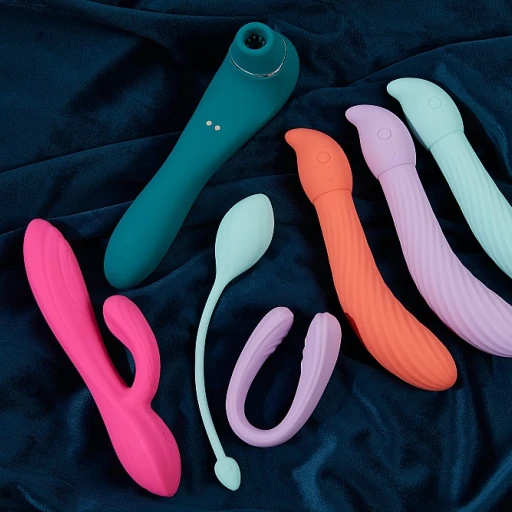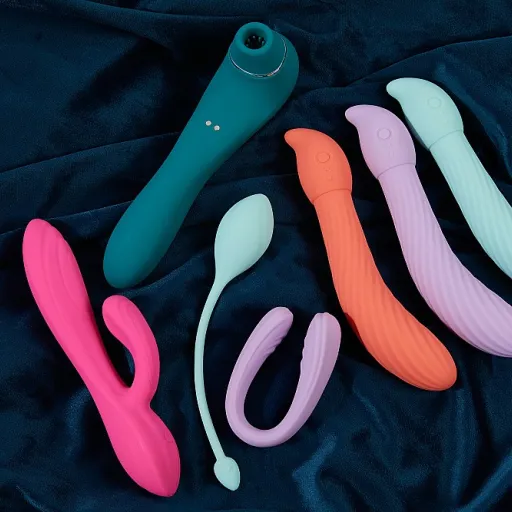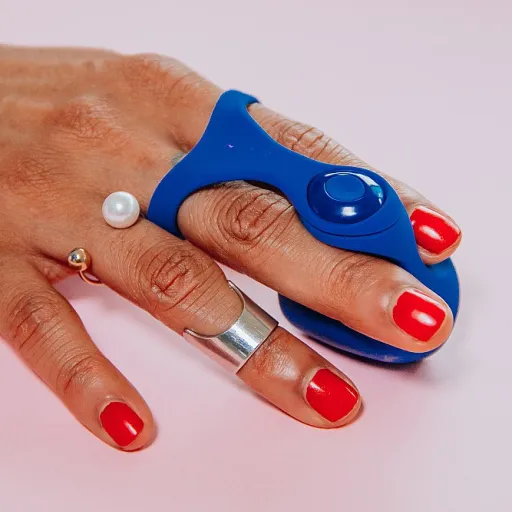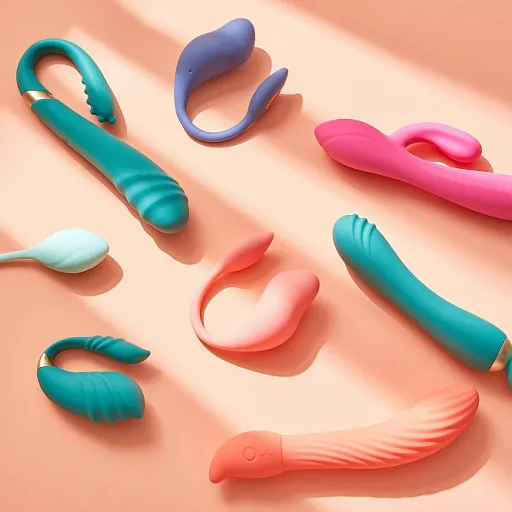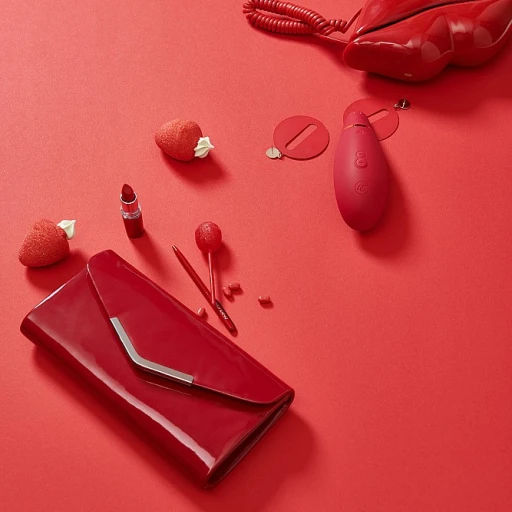
Understanding the Basics of DIY Vibrators
Exploring the Concept of DIY Vibrators
Creating your own homemade vibrator can be a thrilling and cost-effective way to explore personal pleasure with a unique touch. Before diving into the practical how-tos, it's vital to grasp the fundamental principles of crafting a DIY vibrator to ensure that your experience is both fulfilling and safe. First and foremost, understanding the components that go into a sex toy is essential. Typically, a vibrator utilizes a simple electric motor to produce vibration, offering you versatility in sensation. Components such as a game controller or even a face massager are potential foundations for your creation, providing the necessary vibration source. Body-safe materials are another crucial aspect to consider. Silicone, for instance, is commonly used in sex toys and is favored for its non-porous and easy-to-clean nature. A medical glove or a blending sponge covered with a condom can improvisedly mimic that body-safe feeling. Equipping yourself with essential tools and materials grants you the freedom to tailor your DIY vibrator to your desires. Something as straightforward as a battery-operated toothbrush can be repurposed into an effective vibrator, especially with the right attachments. Before embarking on this creative venture, it's also wise to look into potential mishaps and how to troubleshoot them. A few anticipatory measures will not only enhance effectiveness but also ensure your DIY sex toy is as dependable as it is pleasurable. To expand your understanding, delve into unique experiences that people enjoy with other sex toys. Exploring the world of unique floggers can inspire your creativity, offering insight into diverse techniques for achieving pleasure. In summary, embarking on a DIY vibrator project is not just an exercise in creativity but an opportunity for personal and tailored exploration. Remaining mindful of safety and material considerations can lead to a highly satisfying outcome, enhanced by your own custom enhancements.Essential Tools and Materials
Gathering the Right Materials for Your DIY Vibrator Adventure
The journey to creating a homemade vibrator begins with assembling the essential tools and materials required to construct your sex toy. It's crucial to ensure that each element you select is body safe and suitable for intimate use. Below are some materials and tools you may need for your DIY project:
- Vibration Mechanism: For an effective diy vibrator, consider using small motors found in devices like electric toothbrushes, cell phones, or game controllers. These motors can provide the necessary clitoral stimulation you seek.
- Power Source: A battery operated system is most feasible. Ensure you have the correct battery size and voltage that matches your vibration device.
- Silicone or Latex Materials: Using body safe materials such as a medical glove or silicone glove ensures safety. You can also use a condom to cover and protect any components lacking a smooth finish.
- Housing Material: Consider using a makeup blending sponge or a clean sponge cut to size to house the motor. This provides both comfort and the ability to shape your vibrator according to your preferences.
- Adhesives: Hot glue or duct tape can be used to secure the motor and other components, but remember to cover any adhesive that's not body safe with a condom.
- Customize Safely: Once your vibrator is operational, you might want to personalize it. This could involve wrapping it in a body safe makeup blending sponge or securing it within a shower massage handle.
Ensuring a safe and hygienic process is paramount, so remember to use antibacterial wipes to clean your materials before assembly. Stay tuned for the step-by-step directions that will provide guidance on utilizing these materials to create a vibrator that caters to your personal pleasures.
Step-by-Step Guide to Building Your Vibrator
Assembling Your Homemade Vibrator
Creating a homemade sex toy can be both exciting and rewarding. By following this diy approach, you can craft a unique vibrator tailored to your own tastes. Here’s a simple set of instructions to help you safely and effectively assemble your personal toy.
Step 1: Gathering Your Core Components
To begin, you will need a few basic materials. Start by selecting a small, battery-operated motor. Electric toothbrush or face massager devices can serve as excellent sources for a vibrating motor. Pair it with a power source, such as a cell phone battery or battery pack. For added comfort, look for body-safe materials like silicone or a medical glove to use as the outer casing of your vibrator.
Step 2: Creating the Casing
Wrap the motor securely inside the material of your choice. You might use a medical glove or a blending sponge to provide a comfortable external surface. Make sure to create a snug fit without compressing the motor. A condom can be used as a protective layer to maintain hygiene and enable easy cleanup.
Step 3: Securing and Stabilizing the Motor
Stabilize the motor within the casing using duct tape or hot glue, ensuring it remains in place during vibration. Be careful not to obstruct the vibration output. The motor should rest securely yet freely enough for effective clitoral stimulation. A safe setup will avoid any accidental movement.
Step 4: Activating Vibration
Connect the motor to its power source. A DIY solution could involve an old phone or game controller as a temporary switch. Check the connections are stable and safely insulated to avoid short circuits.
Step 5: Testing and Adjustments
Once assembled, test the vibrator's functionality. Adjust the motor or casing if the vibration feels too weak or too strong. Regularly check to ensure each component is held securely, using antibacterial wipes to keep your sex toy clean after every test and use.
Without investing in expensive equipment, you now have a custom homemade vibrator ready for use. If you're interested in exploring further options or ideas for sex toys, visit this resource on exploring toys.
Safety Tips and Precautions
Prioritizing Safety in Your DIY Vibrator Project
When crafting your own homemade vibrator, safety should be your top priority. Ensuring your DIY sex toy is body safe and hygienic is crucial for a pleasurable and worry-free experience. Here are some essential tips to keep in mind:
- Choose Body-Safe Materials: Opt for materials like silicone or medical-grade rubber. Avoid using porous materials that can harbor bacteria, such as certain plastics or sponges.
- Use a Condom: Cover your DIY vibrator with a condom to add an extra layer of protection. This is especially important if you're using materials that aren't specifically designed for sex toys.
- Ensure Electrical Safety: If your vibrator is battery operated or uses an electric component like a phone or toothbrush, make sure all connections are secure and insulated. Avoid using it in the shower or near water unless it's specifically designed for such use.
- Keep It Clean: Regularly clean your vibrator with antibacterial wipes or a gentle soap and water solution. This helps prevent bacterial buildup and ensures your toy remains hygienic.
- Inspect for Damage: Before each use, check your DIY vibrator for any signs of wear or damage, such as cracks or exposed wires. Repair any issues with duct tape or hot glue, if necessary, to maintain safety.
- Test the Vibration: Ensure the vibration is comfortable and not too intense. You can adjust the intensity by using different materials or modifying the electric component, like a game controller or face massager.
By following these safety tips, you can enjoy your homemade vibrator with peace of mind, knowing that you've taken the necessary precautions to protect your body and enhance your pleasure.
Creative Customization Ideas
Personalize Your DIY Vibrator for Maximum Enjoyment
Crafting a homemade vibrator offers an exciting opportunity to incorporate elements that specifically cater to your preferences. Here's how you can creatively customize your DIY sex toy for enhanced pleasure:- Choice of Material: Opt for body-safe materials like silicone or medical glove material to ensure cleanliness and reduce risks of irritation. Silicone is popular due to its soft, skin-like texture and is easy to clean.
- Add Textures: Textures can amplify the sensation of the vibrator. Consider wrapping a clean makeup blending sponge around the device using duct tape or hot glue. The sponge can add extra tactile pleasure.
- Harness the Power of App-Controlled Vibration: If you're tech-savvy, you can integrate a vibrator app with your DIY vibrator. Some existing apps allow you to control vibration patterns and intensity with your cell phone for a customized experience. Use a Bluetooth-enabled device like an old phone or a game controller for this customization.
- Removable Condoms for Easy Cleaning: Using a condom over your DIY vibrator not only keeps it hygienic but also makes cleaning much easier. Opt for an anti-bacterial, body-safe option to protect both the toy and your body.
- Multi-Function Attachments: Attachments like a shower massage head or face massager can transform your toy. They offer varied sensations, from thorough clitoral stimulation to full-body relaxation.
- Incorporate Multi-Vibration Modes: Explore integrating multi-speed options either by modifying toothbrush motors or experimenting with different electric components to achieve varying levels of intensity.
Troubleshooting Common Issues
Addressing Common DIY Vibrator Challenges
Creating your own homemade vibrator can be a rewarding experience, but it's not without its challenges. Here are some common issues you might encounter and how to troubleshoot them effectively.
Vibration Issues
If your DIY vibrator isn't vibrating as expected, check the battery connections first. Ensure that the batteries are fresh and properly aligned. If you're using a battery-operated motor, make sure it's securely attached. Sometimes, a simple adjustment of the electric connections can solve the problem.
Material Concerns
Using body-safe materials is crucial. If you notice any irritation or discomfort, reconsider the materials used. Silicone, medical gloves, and condoms are generally safe options. Avoid using materials that aren't designed for skin contact, like duct tape or hot glue, directly on the body.
Structural Stability
If your vibrator feels unstable, check the assembly. Ensure that all parts are securely fastened. Using a sturdy base, like a makeup blending sponge or a shower massage handle, can provide better support. Reinforce weak points with additional layers of material, but avoid over-tightening, which can restrict vibration.
Cleaning and Maintenance
Keeping your DIY sex toy clean is essential for safe use. After each use, clean it with an anti-bacterial wipe or mild soap and water. Ensure it's completely dry before storage. Regular maintenance will prolong the life of your homemade toy and ensure it's always ready for use.
Customization and Adjustments
If you're not satisfied with the performance, consider customizing your vibrator further. Adjust the vibration intensity by experimenting with different motors or power sources. You can also try adding a textured surface using a face massager or a game controller grip for enhanced clitoral stimulation.
Remember, the key to a successful DIY vibrator is patience and creativity. Don't hesitate to experiment with different components and configurations to find what works best for you.


